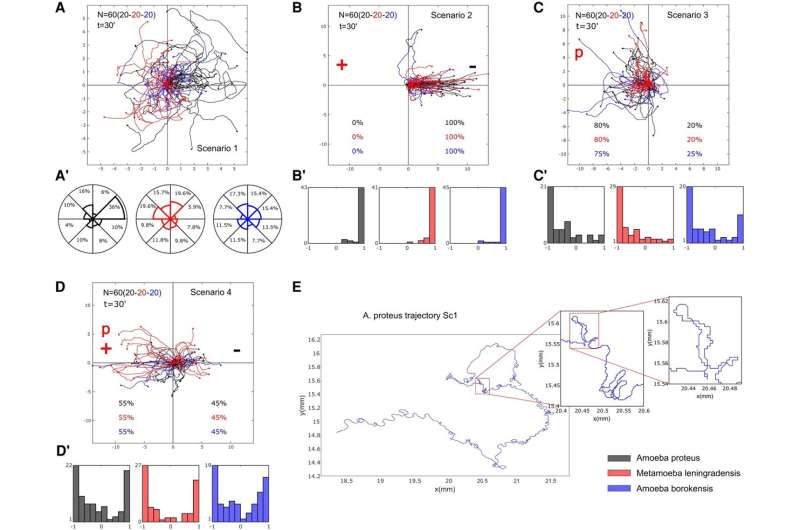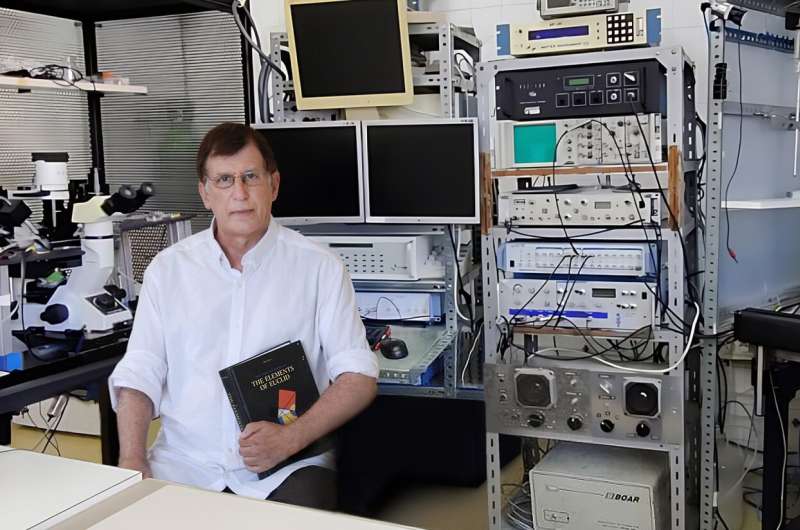This article has been reviewed according to Science X's editorial process and policies. Editors have highlighted the following attributes while ensuring the content's credibility:
fact-checked
peer-reviewed publication
trusted source
proofread
Research reveals self-organized processes govern cell movement

The UPV/EHU researcher Ildefonso Martínez de la Fuente has led an exhaustive analysis of the locomotion trajectories of 700 individual cells using advanced scientific techniques to demonstrate that their movements depend on a joint, self-organized action of practically all the physiological processes that make up the cell.
This multidisciplinary research, in which various departments of the UPV/EHU have participated, has shown for the first time that cell movement is directed and regulated by a fundamental self-organized process that originates spontaneously in all living cells.
According to Ildefonso Martínez de la Fuente, researcher in the UPV/EHU's Department of Mathematics, "These self-organized molecular mechanisms cause the various biochemical-metabolic processes in the cell to form a functional unit, fully integrated as a single whole, thus converting thousands of physiological processes into a single entity.
"It is a fundamental force that causes an integrated behavior to emerge in the cell, and can be compared to the self-organized movement of thousands of starlings that form highly ordered, coordinated structures when they migrate, or even to the ability of ants to build an anthill through self-organized collective behavior," said Martínez de la Fuente.
The author emphasizes that it has never before been scientifically recognized that the cell's locomotion movements are governed by systemic, self-regulating processes that operate at the global level of the cell.
"This scientific finding adds a fresh perspective to the concept of the cell itself and its functional capabilities," he added. "The combination of cell migration studies, from a systemic point of view, together with classical molecular studies, may be crucial in the development of a new generation of efficient therapies for conditions relating to diseases caused by deficient cell migration," said Martínez de la Fuente.
The study is published in the journal PNAS Nexus.

Combining experimental data with quantitative analysis
Cell movement is a key process that is fundamental in the development and optimal functioning of the human body. Cells move when an organism is developing embryonically, when a wound is healing or during metastasis, for example.
Errors during poor control of cell movement can have serious consequences in serious diseases, such as Crohn's disease, certain congenital brain disorders, and various immunological or vascular pathologies, for example.
For decades, scientific work has enabled various local mechanisms involved in cell movement to be identified, but despite these efforts, the essential question remains unanswered: how do cells control and govern their movements.
"Discovering the molecular forces that direct cell migration constitutes a scientific challenge of huge difficulty," said the UPV/EHU researcher, "since in addition to making special complex laboratory devices created specifically for this research, it was necessary to use multidisciplinary techniques that allow experimental studies to be combined with advanced quantitative methods."
"We studied the characteristics of the movement of 700 cells by using techniques that are commonly used in statistical mechanics, which is a fundamental part of Physics. Two of the methods we applied were developed by Nobel Prize Laureate Albert Einstein.
"Furthermore, in this work we used the principles of dissipative self-organization—coherently organized structures–—developed by Nobel Prize Laureate Ilya Prigogine," said Martínez de la Fuente.
More information: Ildefonso M De la Fuente et al, Systemic cellular migration: The forces driving the directed locomotion movement of cells, PNAS Nexus (2024). DOI: 10.1093/pnasnexus/pgae171
Journal information: PNAS Nexus
Provided by University of the Basque Country




















